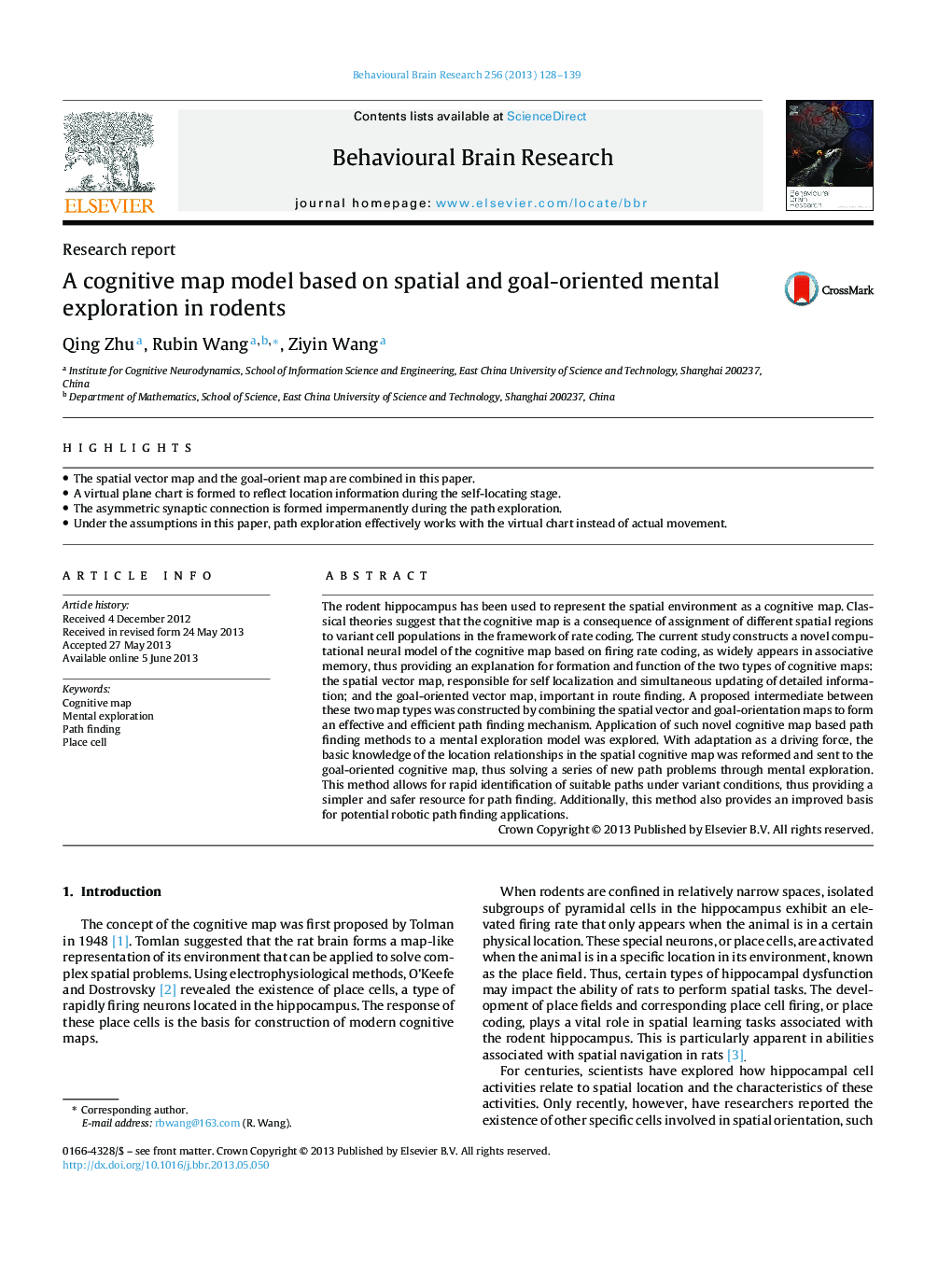| کد مقاله | کد نشریه | سال انتشار | مقاله انگلیسی | نسخه تمام متن |
|---|---|---|---|---|
| 6258761 | 1612976 | 2013 | 12 صفحه PDF | دانلود رایگان |
- The spatial vector map and the goal-orient map are combined in this paper.
- A virtual plane chart is formed to reflect location information during the self-locating stage.
- The asymmetric synaptic connection is formed impermanently during the path exploration.
- Under the assumptions in this paper, path exploration effectively works with the virtual chart instead of actual movement.
The rodent hippocampus has been used to represent the spatial environment as a cognitive map. Classical theories suggest that the cognitive map is a consequence of assignment of different spatial regions to variant cell populations in the framework of rate coding. The current study constructs a novel computational neural model of the cognitive map based on firing rate coding, as widely appears in associative memory, thus providing an explanation for formation and function of the two types of cognitive maps: the spatial vector map, responsible for self localization and simultaneous updating of detailed information; and the goal-oriented vector map, important in route finding. A proposed intermediate between these two map types was constructed by combining the spatial vector and goal-orientation maps to form an effective and efficient path finding mechanism. Application of such novel cognitive map based path finding methods to a mental exploration model was explored. With adaptation as a driving force, the basic knowledge of the location relationships in the spatial cognitive map was reformed and sent to the goal-oriented cognitive map, thus solving a series of new path problems through mental exploration. This method allows for rapid identification of suitable paths under variant conditions, thus providing a simpler and safer resource for path finding. Additionally, this method also provides an improved basis for potential robotic path finding applications.
Journal: Behavioural Brain Research - Volume 256, 1 November 2013, Pages 128-139
